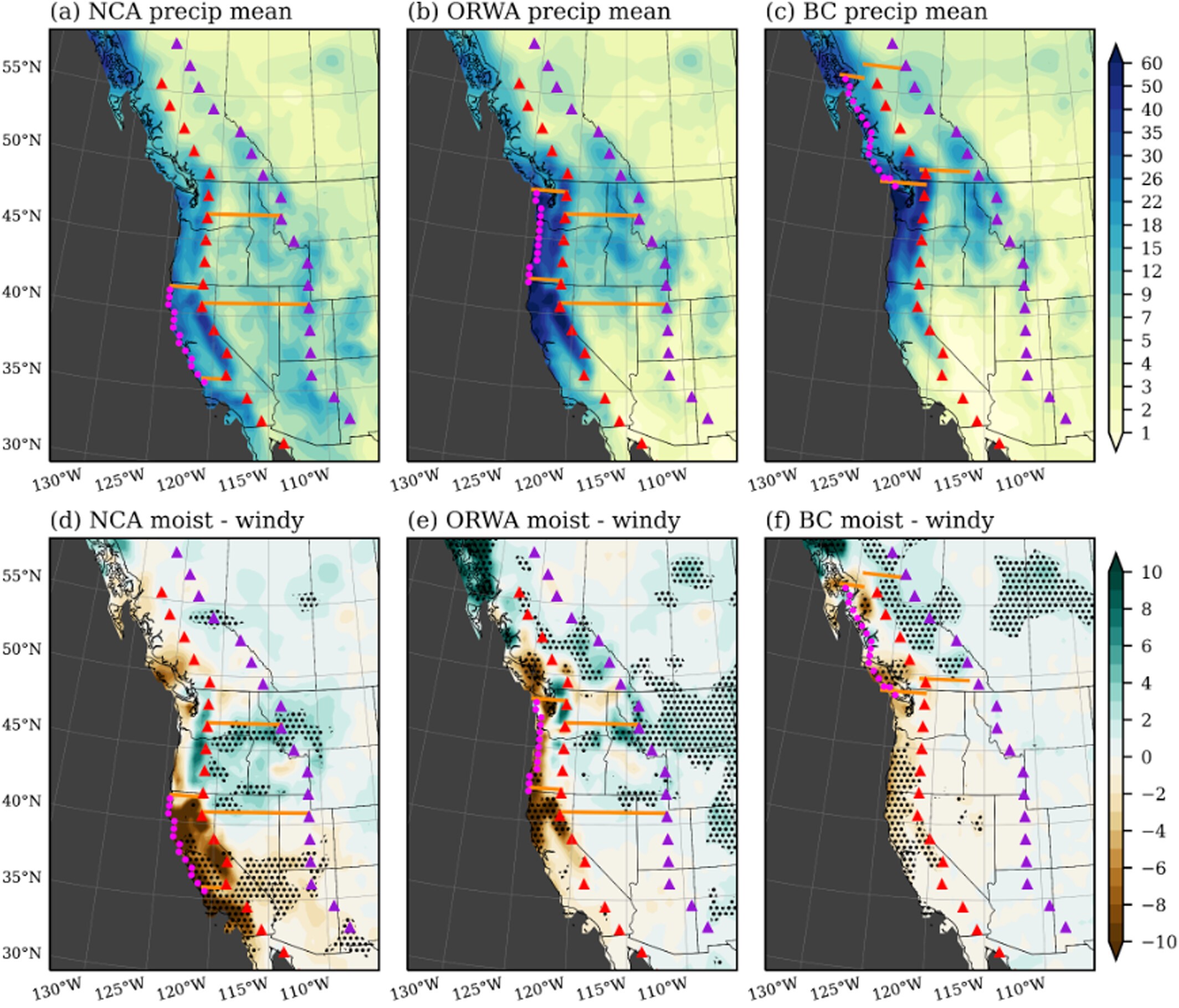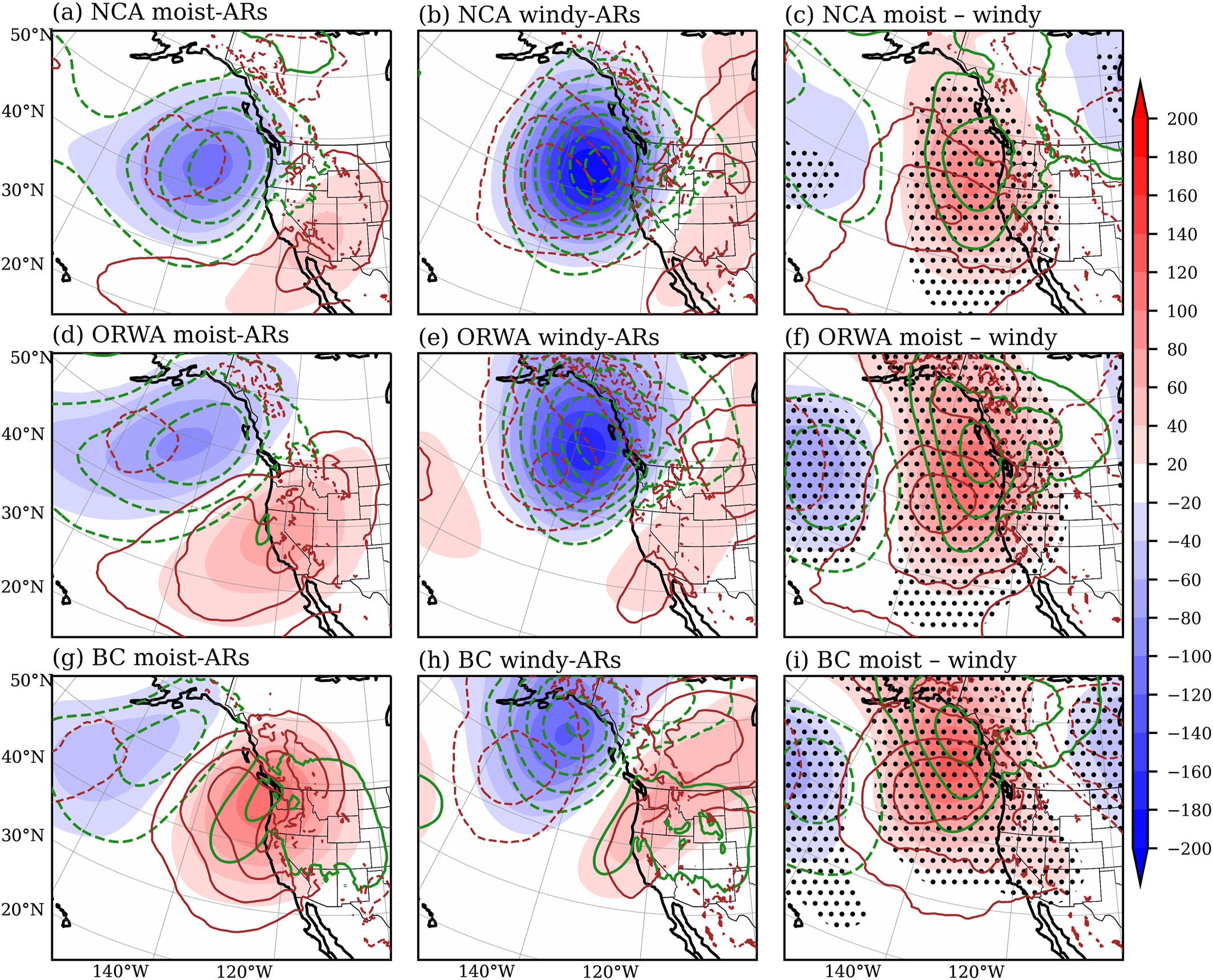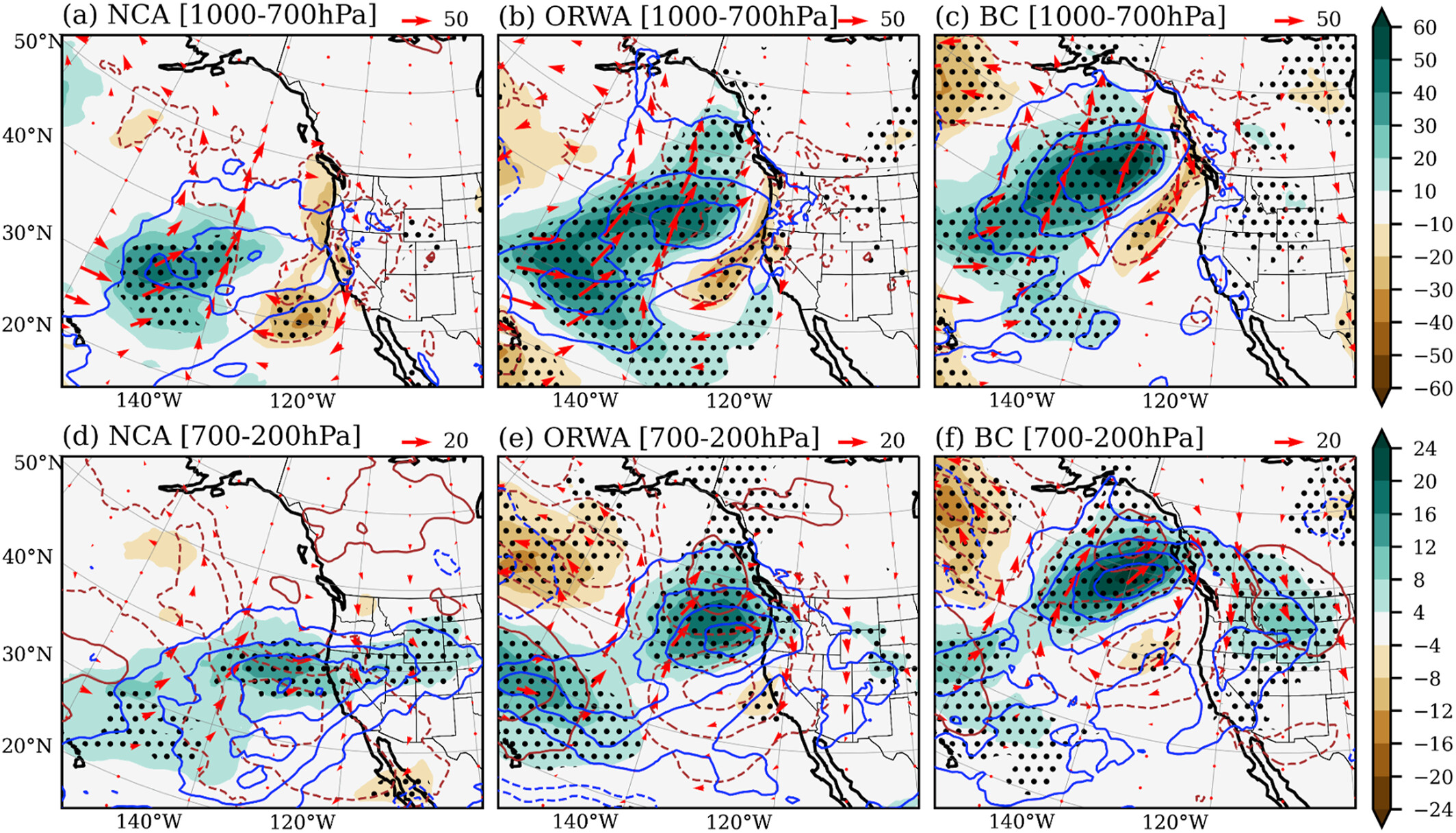CW3E Publication Notice
Characteristics of Precipitation Patterns in Moisture-dominated versus Wind-dominated Atmospheric Rivers over Western North America
May 16, 2025
A paper titled “Characteristics of Precipitation Patterns in Moisture-dominated versus Wind-dominated Atmospheric Rivers over Western North America” was recently published in the AGU’s Journal of Geographical Research: Atmosphere. This study was led by Wen-Shu Lin (CW3E) and co-authored by scientists in CW3E: Joel Norris, Mike DeFlorio, Jonathan Rutz, Jason Cordeira, and Marty Ralph. This work aligns with CW3E’s strategic goal to advance understanding of ARs, extreme precipitation, and their associated impacts, and was sponsored by the California Department of Water Resources Atmospheric River Program and US Army Corp of Engineers.
This paper discussed the mechanisms for precipitation associated with two AR flavors over the western North America: the moist-dominated (moist-ARs) and wind-dominated ARs (windy-ARs). The moist-ARs are categorized as ARs with stronger moisture but weaker wind, while the windy-ARs are categorized as ARs with stronger wind but weaker moisture. Interestingly, the two AR flavors have distinct precipitation patterns (Fig. 1), although they share similar duration and integrated water vapor transport (IVT). The moist-ARs are associated with stronger precipitation in the inland and interior areas, while windy-ARs are associated with stronger precipitation at the coastal area (Figs. 1d-f).
The possible mechanisms leading to the difference in precipitation patterns between moist-ARs and windy-ARs are investigated based on the synoptic patterns of several variables. Moist-ARs are associated with a zonally-oriented and weaker trough at 500 hPa (Fig. 2 left column), leading to an enhanced westerly IVT, and thus favoring inland penetration of moisture. Moist-ARs are also associated with stronger moisture in the upper than lower troposphere (Fig. 3), that more moisture might be transported into inland and interior areas. In contrast, windy-ARs are associated with an enhanced trough at 500hPa and enhanced cyclone at sea level (Fig. 2 middle column) that provide greater pressure gradient force to maintain the stronger wind speed of windy-ARs. These lead to an enhanced southerly and southwesterly IVT, especially in the lower troposphere (Figs. 3a-c). At the coastal area, windy-ARs also accompany with stronger IVT convergence and synoptic scale ascent forcing than moist-ARs, which are beneficial for windy-ARs producing precipitation at the coastal areas.
Figure 1. (a-c) Mean precipitation accumulated over AR duration [mm AR-1] in NCA, ORWA, and BC, respectively. (d-f) Precipitation pattern differences [mm AR-1] between moist-ARs and windy-ARs in NCA, ORWA, and BC, respectively. Black dots on (d-f) indicate that the differences between moist-ARs and windy-ARs are significant at the 95% level based on a Student’s t-test. The pink dots mark the grid points of coastal region, the red triangles mark the grid points of inland transects, and the purple triangles mark the grid points of interior transects. (Figs. 4a-f from Lin et al. 2025)
Figure 2. Spatial patterns of H500 anomaly (shading in m), SLP anomaly (green contours every 2hPa), T850 anomaly (brown contours every 1 K) for moist-ARs, windy-ARs, and the differences between moist-ARs and windy-ARs landfalling in (a-c) NCA, (d-f) ORWA, (g-i) BC averaged over the AR total duration. For all contours, the zero lines are omitted, solid lines are positive, and dashed lines are negative. The black dots on (c, f, i) indicate that the difference in H500 anomaly between moist-ARs and windy-ARs is significant on a 95% level based on a Student’s t-test. (Fig. 5 from Lin et al. 2025)
Figure 3. The differences of IVT anomaly (vectors and shading in kg m-1 s-1), IWV anomaly (blue contours), and WIND anomaly (brown contours every 1.5 m s-1) between moist-ARs and windy-ARs and for (a-c) 1000 – 700hPa (blue contours every 1 kg m-2) and (d-f) 700 – 200hPa (blue contours every 0.2 kg m-2). The black dots indicate that the difference in IVT anomaly between moist-ARs and windy-ARs is significant on a 95% level based on a Student’s t-test. (Fig. 7 from Lin et al. 2025)
Lin, W.-S., Norris, J. R., DeFlorio, M. J., Rutz, J. J., Cordeira, J. M., & Ralph, F. M. (2025). Characteristics of precipitation patterns in moisture‐dominated versus wind‐dominated atmospheric rivers over western North America. Journal of Geophysical Research: Atmospheres, 130(9), e2024JD041966.. https://doi.org/10.1029/2024jd041966



